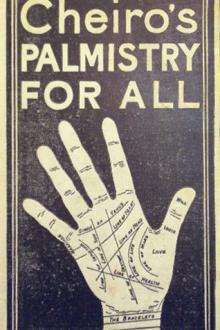The Diary - Samuel Pepys (red white and royal blue hardcover txt) 📗

- Author: Samuel Pepys
Book online «The Diary - Samuel Pepys (red white and royal blue hardcover txt) 📗». Author Samuel Pepys
Espinette is the French term for a small harpsichord, at that time called in England a spinet. It was named from a fancied resemblance of its quill plectra to spines or thorns. ↩
Tempest and Wallington were members of the Music Society referred to in note 3639. —B. ↩
The name of Abraham Bosse appears in the index to Walpole’s Catalogue of Engravers. ↩
See May 9th and 15th, 1668, ante. ↩
Captain Deane (afterwards Sir Anthony) was at this time master shipwright of Harwich. ↩
Captain Silas Taylor wrote to Williamson from Harwich, December 7th, 1667:
“The Resolution, a beautiful third-rate ship, was launched, and swims a fine sight in the water.”
Calendar of State Papers, 1667–68, p. 65↩
“July 16, 1668. The experiment of Mr. Steno was tried, according to his method, before the Society by Dr. King, and succeeded, so as the dog, upon whom it was made, was seen to be deprived of all motion below the part, where the descending artery was tied, which was upon the top of the spine by a needle passed through between the 8th and 9th ribs.”
Birch’s History of the Royal Society, vol. ii, p. 306↩
The report of the Principal Officers and Commissioners of the Navy on the Seamen’s Tickets, signed by Lord Brouncker, Commissioners Middleton, Sir Wilham Penn, and S. Pepys, which was read at the Court at Whitehall, July 17th, 1668, is printed in Penn’s Memorials of Sir W. Penn, vol. ii, p. 507. ↩
See June 22nd and December 5th, 1662, ante. ↩
At Culford, in Suffolk. ↩
Erysipelas. ↩
This passage has been frequently quoted as referring to Pepys’s small bookplate, with his initials S. P. and two anchors and ropes entwined; but if looked at carefully with the further reference on the 27th, it will be seen that it merely describes the preparation of engravings of the four dockyards. ↩
See August 14th, post. ↩
See August 27th, post. ↩
Phineas Pett. The “Revocation of letters patent formerly granted to Phineas Pett, his Majesty’s shipwright at Chatham,” is dated September 28th, 1668 (Calendar of State Papers, 1667–68, p. 607). His career, however, was not closed, for in 1675 he was master shipwright at Woolwich, and in 1680 he was appointed Comptroller of the Stores, and knighted. He was Commissioner at Chatham from 1685 to 1689. ↩
A comedy by Sir Robert Stapylton, see note 1705. ↩
A comedy by the Hon. James Howard, see note 3646. ↩
William Ashburnham, the cofferer. ↩
The Old Troop; or, Monsieur Ragou, a comedy by John Lacey, printed in 1672, 4to. —B. ↩
An account of these tubulous spectacles (“An easy help for decayed sight”) is given in The Philosophical Transactions, No. 37, pp. 727–731 (Hutton’s Abridgment, vol. i, p. 266). See Diary, August 12th and 23rd, post. ↩
See September 24th, 1662, and April 29th, 1663. ↩
John Seddon was one of the four clerks of the Ticket Office, and, according to a MS. in the Pepysian Library (No. 2554), he was appointed to attend Pepys for the signing of tickets. ↩
Captain Edward Witham (see note 2194). ↩
George Abbot, Archbishop of Canterbury. Died 1633. ↩
Liphook, a village in Bramshott parish, Hants. ↩
Afterwards Sir John Tippetts. See note 1385. ↩
Charles Colbert, Marquis de Croissy, brother of Jean Baptiste Colbert, the great minister. —B. ↩
Evelyn’s Diary, October 21st, 1674:
“I went to see the great loss that Lord Arlington had sustained by fire at Goring House, this night consumed to the ground, with exceeding loss of hangings, plate, rare pictures, and cabinets; hardly anything was saved of the best and most princely furniture that any subject had in England.”
↩
This miniature of Mrs. Pepys cannot be traced. —B. ↩
The title of this book was, The Honour of the Merchant Taylors. Wherein is set forth the noble acts, valliant deeds, and heroick performances of Merchant Taylors in former ages; their honourable loves, and knightly adventures, their combating of foreign enemies and glorious successes in honour of the English nation: together with their pious acts and large benevolences, their building of public structures, especially that of Blackwell Hall, to be a marketplace for the selling of woollen clothes: Written by William Winstanley. Lond., 1668. 8vo. With the head of Sir Ralph Blackwell, with a gold chain: arms of London on the right, and of the Merchant Taylors on the left. —B. ↩
During the troubled reign of Charles I, the House of Commons gave parishioners the right of appointing lecturers at the various churches without the consent of rector or vicar, and this naturally gave rise to many quarrels. In the early period of the war between the king and the parliament, a course of sermons or lectures was projected in aid of the parliamentary cause. These lectures, which were preached by eminent Presbyterian divines at seven o’clock on the Sunday mornings, were commenced in the church of St. Mary Magdalen in Milk Street, but were soon afterwards removed to St. Giles’s, Cripplegate. After the Restoration the lectures were collected in four volumes, and published under the title of the Cripplegate Morning Exercises, vol. i in 1661; vol. ii in 1674; vol.





Comments (0)